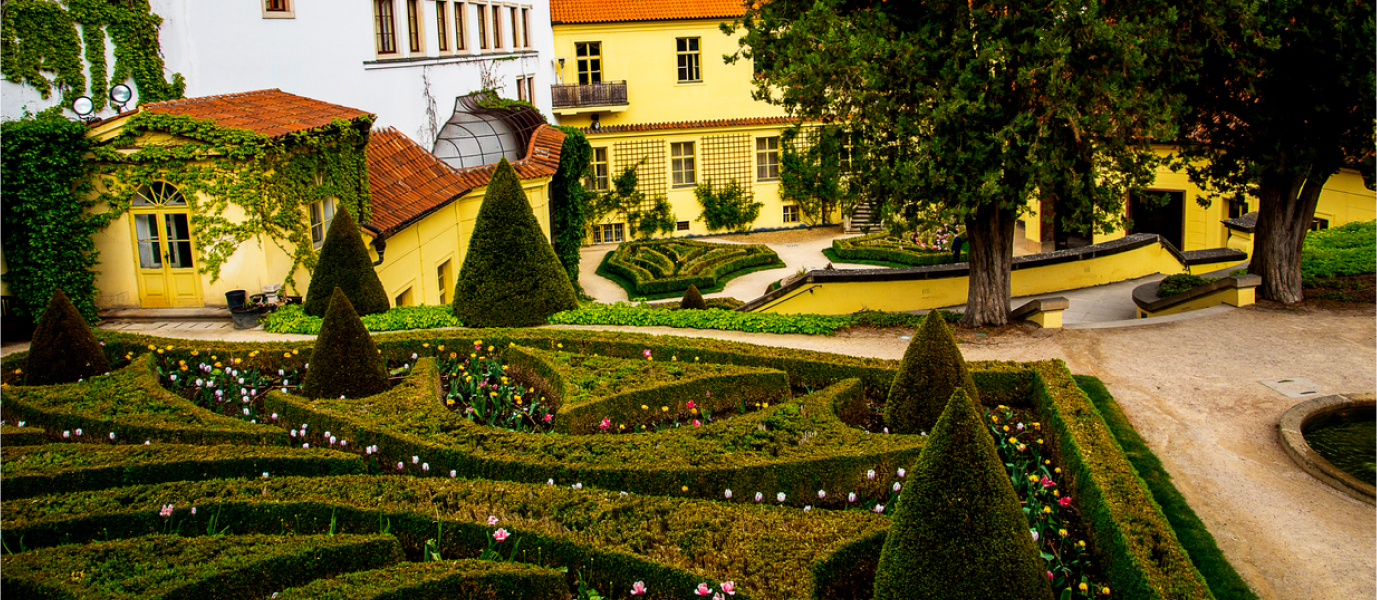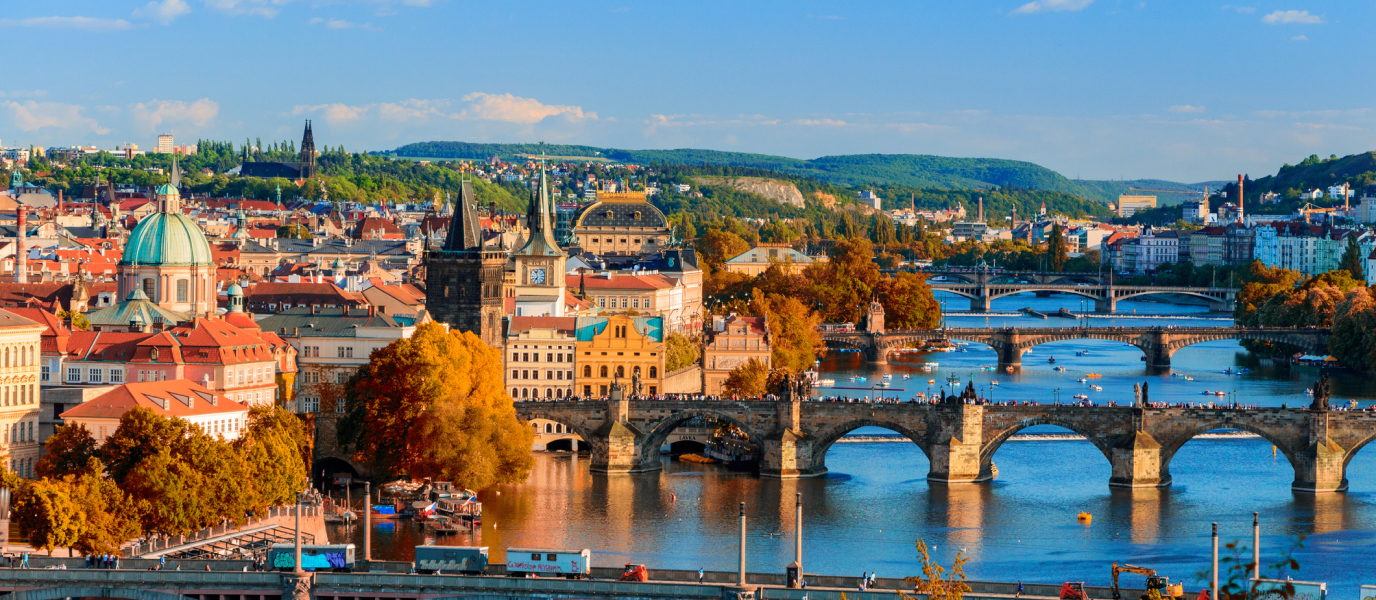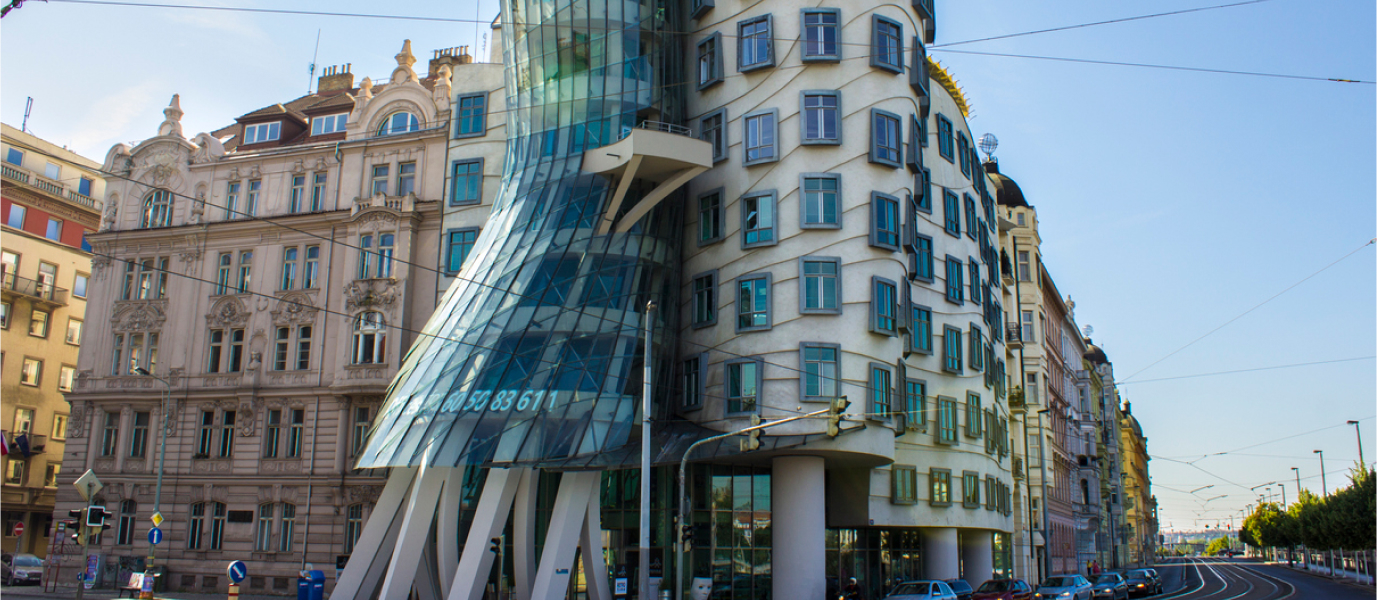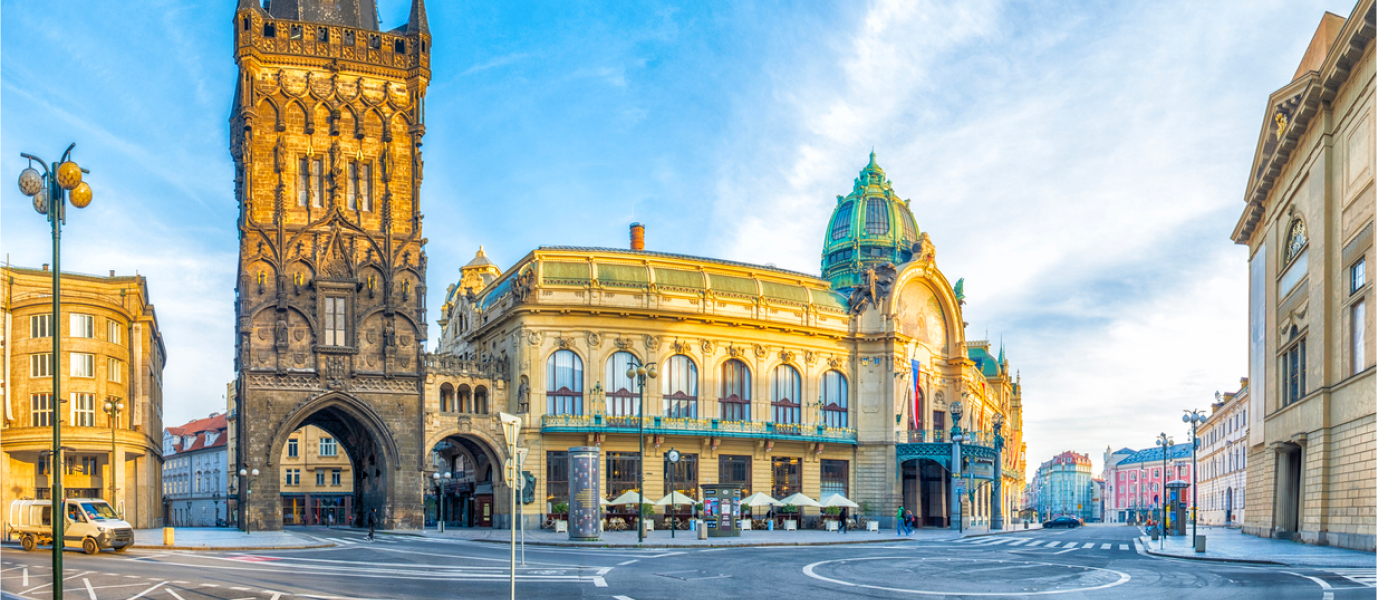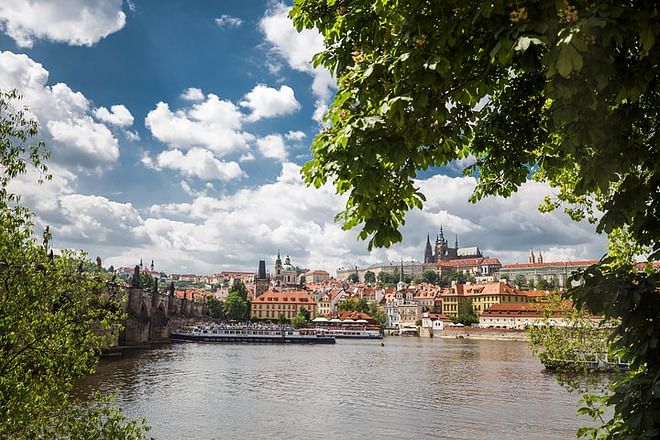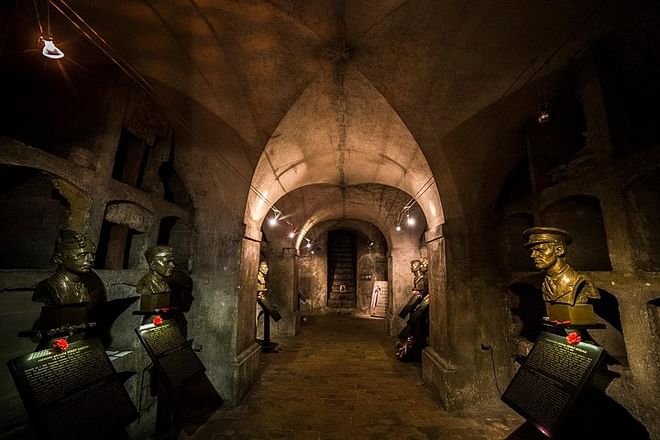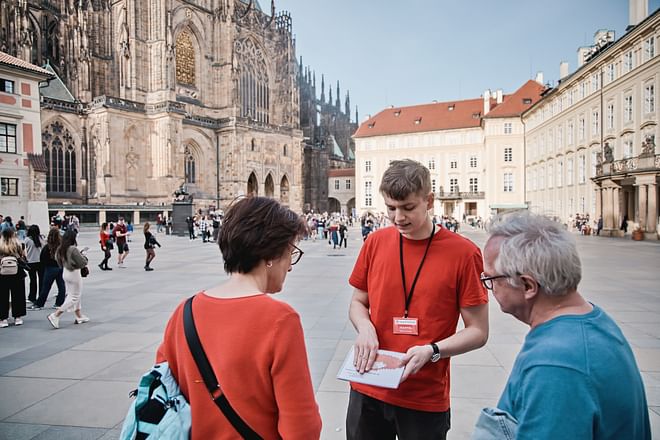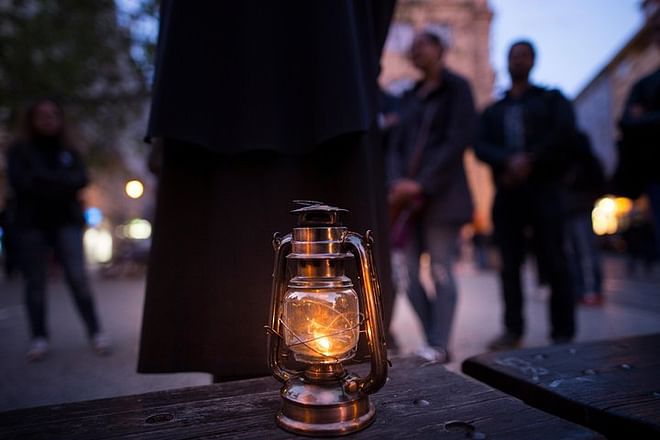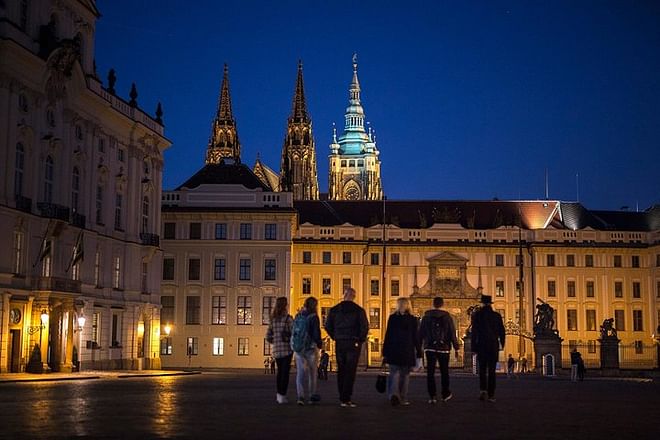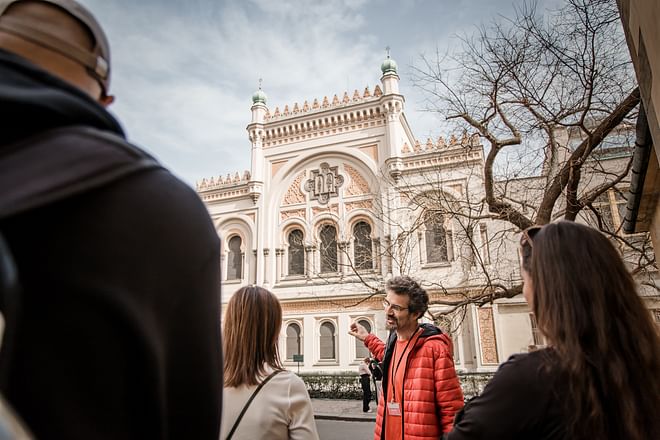Hidden deep in the neighbourhood of Malá Strana, on the slopes of Petřín Hill, lies Prague’s charming and elegant Vrtba Garden, a small gem that stands as a vestige of Baroque landscaping and all its theatricality, imagination and surprises.
Reaching the elegant parterre, however, is not so simple. Although it is situated close to the famous Charles Bridge, it is made practically invisible by the surrounding buildings and, as a result, often goes unnoticed. Which is why you need to be in the know to visit it.
The benefit of this is being able to enjoy the beautiful space practically alone. The hordes of tourists remain outside, whilst visitors have all of Vrtba Garden to themselves. It’s not unusual to find newly-married couples posing for a photo shoot to capture the moment. What’s more, the garden’s different tiers offer incredible views of Prague Castle and the neighbourhood of Malá Strana.
Join us now as we explore this secret garden in Prague and discover all the wonders that it holds.
The history of Vrtba Garden
The terraced garden was ordered to be built by the Vrtba family next to their palace property between 1715 and 1720. The Vrtba family were Austro-Bohemian nobles who had prospered in the Prague of the Counter-Reformation. Jan Josef, Count of Vrtba and burgrave, or governing ruler, of Prague Castle, commissioned the Czech architect František Maxmilián Kaňka with the project. The architect had also been responsible for the extension of the Clementinum, the headquarters of the city’s Jesuit college and university.
The beautiful sculptures of mythological figures and gods from antiquity adorning the garden are the work of Matthias Braun, an artist from Tyrol who has gone down in history as the person responsible for the Baroque sculptures on Charles Bridge in Prague. For his part, the artist Václav Vavřinec Reiner was commissioned to paint the frescoes that decorate the walls of the so-called Sala Terrena at the start of the garden.
Vrtba Garden’s artistic style
Vrtba Garden is regarded as an Italian-style Baroque garden. The terraced garden concept and the intimacy of the place, which helps make it into a type of giardino segreto, recall the Humanist gardens of Cinquecento Italy. Vrtba Garden, however, is no doubt a product of its time, and the architect Kaňka was not quick to shun the most Rationalist ideas typical of French gardens when designing the parterres. As was to be expected, European palaces were heavily influenced by the designs of André Le Nôtre in the gardens of Versailles, above all during the first half of the eighteenth century.
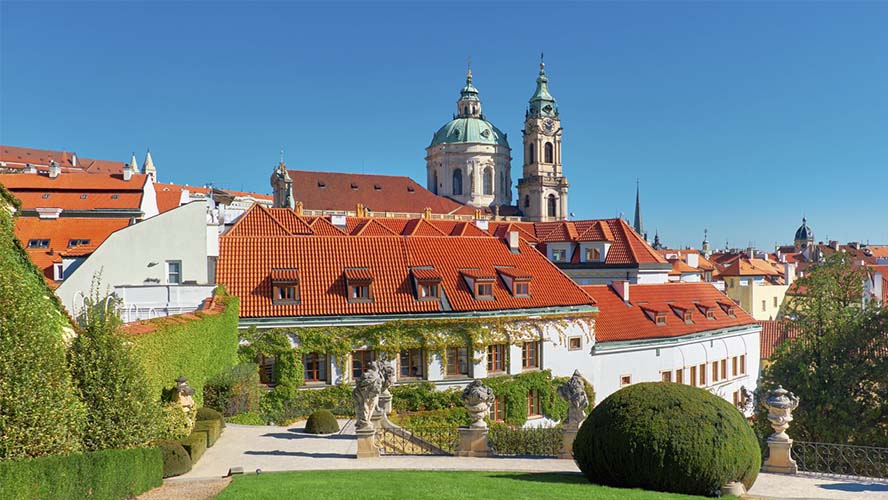
Nevertheless, you’d be wrong to think of Vrtba Garden as a mere hybrid of Italian and French ideas without highlighting its own originality. The idea of a terraced garden with stairs set across two sections was employed as a solution to the natural sloping ground of Petřín Hill. In addition to this was the need to adapt the park to the limited space that was available. The result is a garden with no place for straight lines.
The tiered garden boasts an initial section with a concave stairway and a second section with a convex stairway, as well as a gloriette at the garden’s highest point, which also curves inwards, although it is accessed via a staircase that curves outwards. And thus, space is capitalised to the maximum with twists and turns and a flair characteristic of the Baroque of the Counter-Reformation, which is reflected, as you would expect, in the garden itself: all the parterres and plant tapestries are, in turn, designed around curved lines. Ironically, all this contrasts with the imaginary central axis of the garden, which connects and symmetrically divides the whole garden in two, from the upper gloriette to the entrance in the lower section.
Exploring Vrtba Garden
As soon as you enter the garden there is a beautiful Baroque statue depicting Atlas holding up a globe on his shoulders. The lower section of the garden has four beautiful parterres on each corner and a central fountain with a sculpture of a young boy—perhaps a young Hercules—wrestling a threatening sea monster with his arms.
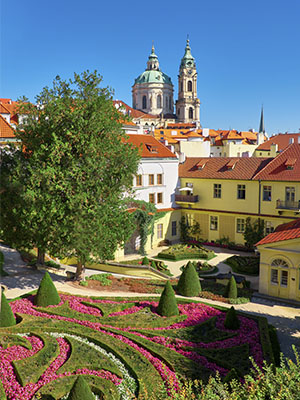
Situated on the southern side of this same section is the oval-shaped Sala Terrena, whose walls and vault are richly decorated with frescoes by Reiner, as well as sculptures of Bacchus and Ceres, created by Braun and situated in the niches on either side of the room.
The first terrace is accessed via a set of stairs on either side of the garden, which run alongside a simple concave retaining wall. The stairways meet at the top, flanked by two trees that make for a type of natural triumphal arch. The terrace is practically double the width of the garden’s first section, although it’s quite a bit shorter. Two original and imaginative parterres surround a circular central fountain, which is slightly smaller than the one in the lower section.
Another double stairway, which begins in the centre, takes you to the second terrace. The retaining wall—in this case convex—is more heavily decorated than the previous one. The whole staircase and balustrade of the upper section are topped off by Baroque sculptures of mythological figures and ancients gods, as well as decorated urns, all created by Matthias Braun.
The terrace is decorated with perfectly trimmed hedges and the parterres give way to a grass tapestry intersected by three paths, which emerge from the furthest point of the terrace, where the simple gloriette with its blocked-off niches stands. The upper terrace boasts the most irregular design of the whole garden. On the south-facing side there is a small island of greenery, which helps skew the garden’s symmetry, and a series of hedges pruned into conical shapes that somewhat evoke a type of Rationalist forest.
The irregular design is balanced out more than enough by the incredible views that can be seen on the top terrace of Vrtba Garden, where you’ll be able to capture the beautiful vista of the entire city of Prague.





























































